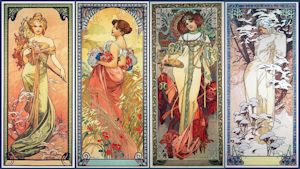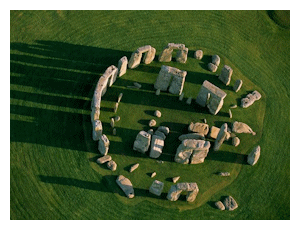
Planning strategies drawn
from the study
of celestial mechanics
| |
| HOME |
| EPHEMERA |
| CONSULTATIONS |
| ASTROLOGY |
| PAYMENTS |
| ABOUT |
| CONTACT |
| MAGI ASTROLOGY |
| MAGI SOCIETY |
MAGI BETTE ASTROLOGY |
Consultations * Relationship Analysis * Business Planning * Choosing Optimum Dates THE SEASONS “To everything there is a season…..” Humankind used the night skies as sign posts for thousands of years and didn’t consider astrology “for entertainment purposes only.” Much has been discovered about how ancient peoples depended upon the positions of the Sun, the Moon and the turn of the seasons. The ancient Egyptians needed to know when the Nile would flood the valley for planting purposes. They noticed that the flooding of the Nile corresponded to the appearance of the star Sirius rising in the Eastern sky just before the Sun after being invisible for several months. Fishermen observed the lunar cycles and noticed more fish were caught close to a Full Moon. In agrarian societies it was crucial to predict the upcoming seasons because raising animals and crops was essential to survival. Astronomy has always been an important consideration in forecasting the best times for planting, fishing, animal husbandry and harvesting. The world’s greatest cultures charted the seasons. Astrology is the study of astronomical cycles as they pertain to man. It is all relevant. Many traditional and religious holidays were molded around ancient agricultural holidays that were originally used to mark the seasons. Most people are familiar with the equinoxes and solstices. Equinoxes occur in the spring and fall, when the length of day and night are equal. The solstices fall in winter and summer, when the longest night and longest day occur. These events occur because the Earth is tilted on its axis and Earth's orbit is not a perfect circle. Understanding and predicting each of these turning points meant that the periods of warmth or cold would arrive in a predictable manner and gave ancient farmers time to prepare. The motto of House Stark from Game of Thrones is “Winter is coming!” Perhaps the popularity of Game of Thrones is that it resonates with our ancient genes that acknowledge the power of the seasons. Knowing when these seasonal turning points were reached was imperative in ancient times. Predicting the future was a necessity.
The Mayans aligned many of their temples and buildings to help observers monitor celestial positions. Many buildings pointed towards the equinoxes and other buildings had doorways and windows aligned with the rising of Venus, one of the most important celestial bodies to the Mayan culture. PREDICTING THE UNPREDICTABLE The dates of the equinoxes and solstices vary from year to year because there are 365 ¼ days in a year and a circle contains only 360 degrees. This lack of perfect symmetry created calendars that, over time, became inaccurate. Most astrologers, as well as astronomers, seem determined to fit the planets and their orbits into nice, neat packages, but there always seems to be a little bit left over. Nature doesn’t always cooperate. Or perhaps it is the nature of man to be a bit lazy. It is certainly easier to divide 360, rather than 365 ¼ , into perfect symmetrical segments! CELEBRATING THE TURNING POINTS It is no coincidence that Christmas is celebrated a few days after the winter solstice by erecting a Christmas tree (when one harvests trees for firewood). Nor is it a coincidence that St. Patrick’s Day, when celebrants enjoy the “wearing of the green,” (with green being the color of spring), is celebrated just before the spring equinox. The U.S.A. even hosts 4th of July celebrations not long after the summer solstice. In the northern hemisphere the 4 major seasonal turning points are: Spring (Vernal) Equinox March 19-21 ---- when the Sun crosses 0° Aries CROSS QUARTER DAYS The halfway point between the solstices and equinoxes is called a Cross Quarter Day. These lesser known calendar dates based on the seasons are also celebrated with numerous holidays. One of the most famous of the cross quarter days is still celebrated in modern times and known as Halloween. Halloween originally marked the halfway point between the fall equinox and winter solstice. Some people consider the cross quarter days – such as Halloween -- to be based solely on pagan celebrations, but the celebrations grew from scientific facts. Determining the halfway point between fall and winter and winter and spring was an important consideration to ancient agrarian societies. Farmers needed to know when it would be safe to plant their crops and hunters needed to know when migratory prey would be abundant. Forecasting the seasons was essential for survival. Last year the TRUE cross quarter date fell on November 7, which seems quite far away from Halloween. Halloween is celebrated on October 31 rather than the first week of November because when the Julian calendar (Old Style) was traded in for the modern Gregorian calendar (that began creeping into usage in the late 1500s) up to 10 days were lost. The Gregorian calendar, even with its tiresome occasional leap year, was a vast improvement over the Julian calendar and adhered to the seasons much better. However, yet once again, people like to have a nice neat predictable date on their calendars so October 31 was deemed to be Halloween although it isn’t an accurate midpoint of the seasons. MODERN MAN CELEBRATES CROSS QUARTER DATES The actual date of the midpoint between the fall equinox and winter solstice can vary from year to year just as the solstice and equinox dates vary. At some point in the days spanning November 5 – 8 the Sun crosses 15 degrees Scorpio. This Cross Quarter Date is just a few days before the U.S. holds elections! On a day between February 2—6, dependent upon the exact date of the solstice and equinox, the Sun arrives at the halfway point between the winter solstice and spring equinox. In the U.S.on February 2 close to this Cross Quarter Date we celebrate Groundhog’s Day. That little underground critter may or may not see his shadow, but people consider it as a harbinger of the coming spring. Originally it was called Imbolc (lambs' milk) because this is when the lambing season began. It was also called Brigantia for the Celtic female deity of light, calling attention to increasing sunlight. In modern times we also have the Super Bowl in the same time period. The Super Bowl has evolved into a national party day for individuals who watch the game on TV while companies compete for notice through extravagant advertisements between plays. In early May at the time of another Cross Quarter Day there are plenty of celebrations including Cinco de Mayo on May 5 (Mexico) and May Day with Maypoles and dancing and Celtic bonfire festivals. August 1, another date close to Cross Quarter Day, is Lammas Day or the festival of the wheat harvest. This is halfway between the summer solstice and fall equinox, and some say it was historically the date when rents were due in the form of harvest tithes to the land owner and others say that loaves of bread were baked from the harvest of wheat. In the U.S. there doesn’t seem to be any official holiday but plenty of people take their vacation! CROSS QUARTER DAYS 1st Cross-Quarter Day February 2 - 6 –-- Sun 15 ° Aquarius Read more about the seasons at Almanac.com
More ...The Symbolisms of the Planets
© 2004-2016 Magi Bette & Solstice Point Productions All Rights Reserved
|











 This is why ancient men built crude “observatories” such as Stonehenge.
This is why ancient men built crude “observatories” such as Stonehenge.